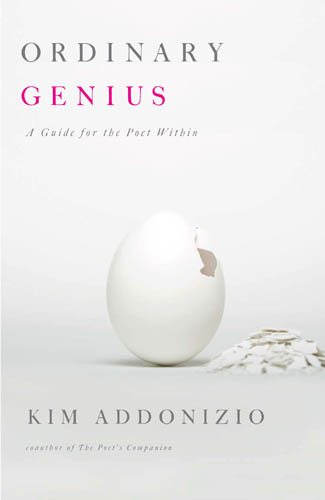
In “Why Students Don’t Like Poetry,” a Chronicle of Higher Education blog post from April 19, 2009, Mark Bauerlein argues that students don’t like poetry largely because they are introduced to the wrong kind of poetry: difficult poetry by the likes of John Ashbery, the kind of poetry it’s hard to understand “the basic meaning” of, poetry to which students “can’t relate.”
According to Bauerlein, when he “tried a different kind of verse, this one with rhyme and regularity and narrative,” the students took to the poetry. The poem Bauerlein uses as an example of more student-friendly work is Dana Gioia’s “Summer Storm.” According to Bauerlein, Gioia’s poem worked in the classroom because it “had rhyme and music,” and because it “had a subject they [the students] all could understand…”
While Bauerlein’s post gave rise to many interesting comments (especially by teachers telling about what they’ve done in the classroom to convey to students the pleasures and the discipline of poetry), many of the comments also are predictably polemical. Some say Bauerlein is right on: poetry should be accessible. Others argue that he is dumbing-down the real demand of difficult poetry merely to appeal to a generally uninformed audience.
Now, I don’t want to say that applying the turn to this conversation would offer a kind of cure-all for teaching poetry, but I do think that some judicious thinking about the turn can offer some helpful insights and ideas about and for pedagogy.
Thinking about the turn is called for in this case. While Gioia’s “Summer Storm” does have “rhyme and regularity and narrative” it also has a clear and distinct turn: at the beginning of the third-to-last stanza, the poem turns from a memory to a consideration of the meaning of memory and the past. However, as so often occurs in poems with turns, the turn goes by unrecognized as a significant feature in the poem. (In fact, though he includes a link to the full text of Gioia’s poem, Bauerlein’s citations and summary of the poem include nothing of the poem after the turn.)
But, of course, I think the turn should have been mentioned. Mentioning the turn is simply descriptively accurate: the poem in fact has a turn. And the turn could have been one of the things the students liked and “got” about Gioia’s poem: Gioia’s poem offers something accessible to many 19 year olds: a story with a moral.
But focusing more attention on the turn could have offered even more to the conversation. If not a cure-all, the turn at least could build bridges, including:
1) from the student’s own language to the poem’s maneuvering (students use turns in their own language; they easily can be shown how poems employ turns);
2) from a focus on a poem’s meaning to its being—showing students that poems are things that turn is one of the clearest and most succinct ways to show students that poems are more enactments and less easily-paraphrased statements; and
3) from accessible to more difficult poetry—aware that one of the key things that poems do is turn, students become better readers of all kinds of poems. (The turn is at the heart of not only so many of the poems in Billy Collins’s Poetry 180: A Turning Back to Poetry but also the poetics of Rae Armantrout and Jorie Graham. (For a glance at the turn’s presence in Armantrout and Graham, click here. Scroll down to read the quotations from Jorie Graham and Hank Lazer on Rae Armantrout.))
While Bauerlein’s choice of Gioia as an alternative to Ashbery is polemically fraught, raising specters of the ol’ American poetry wars, and in fact might depend on those old dichotomies (intentionally or not, it pits New Formalism against the Post Avant, and suggests that one way you figure out if a poem is accessible is if it rhymes), focusing on the turn could help to erase those dichotomies: what about teaching some (accessible?) poems that have clear and distinct, easily spotted and discussed turns and then teaching some (difficult?) poems that incorporate more complex movements, twists and turns that the students could work to map out and work through? In this way, the turn can be used to link seemingly different kinds of poetry rather than contribute once again to problematic and predictable binaries.

